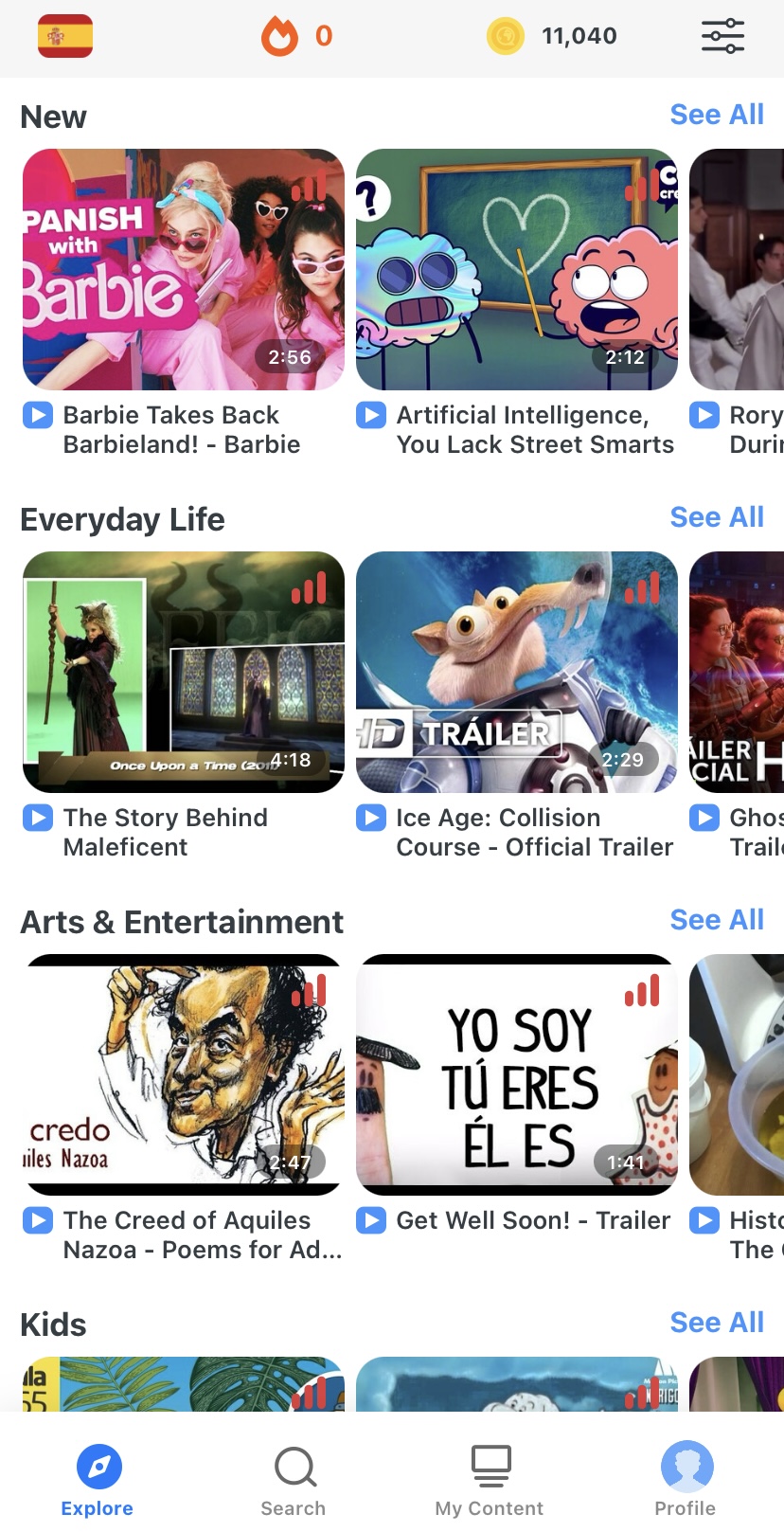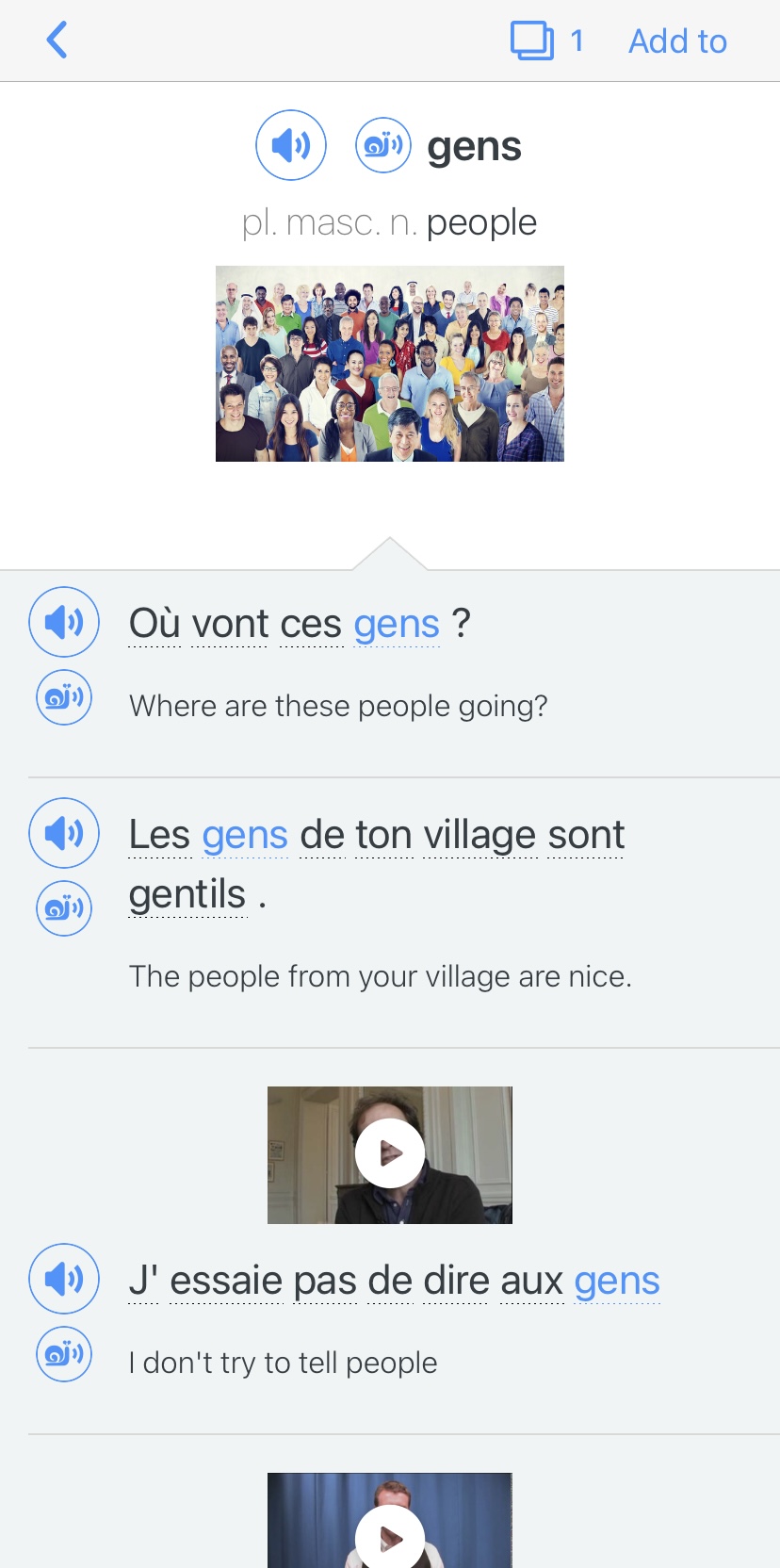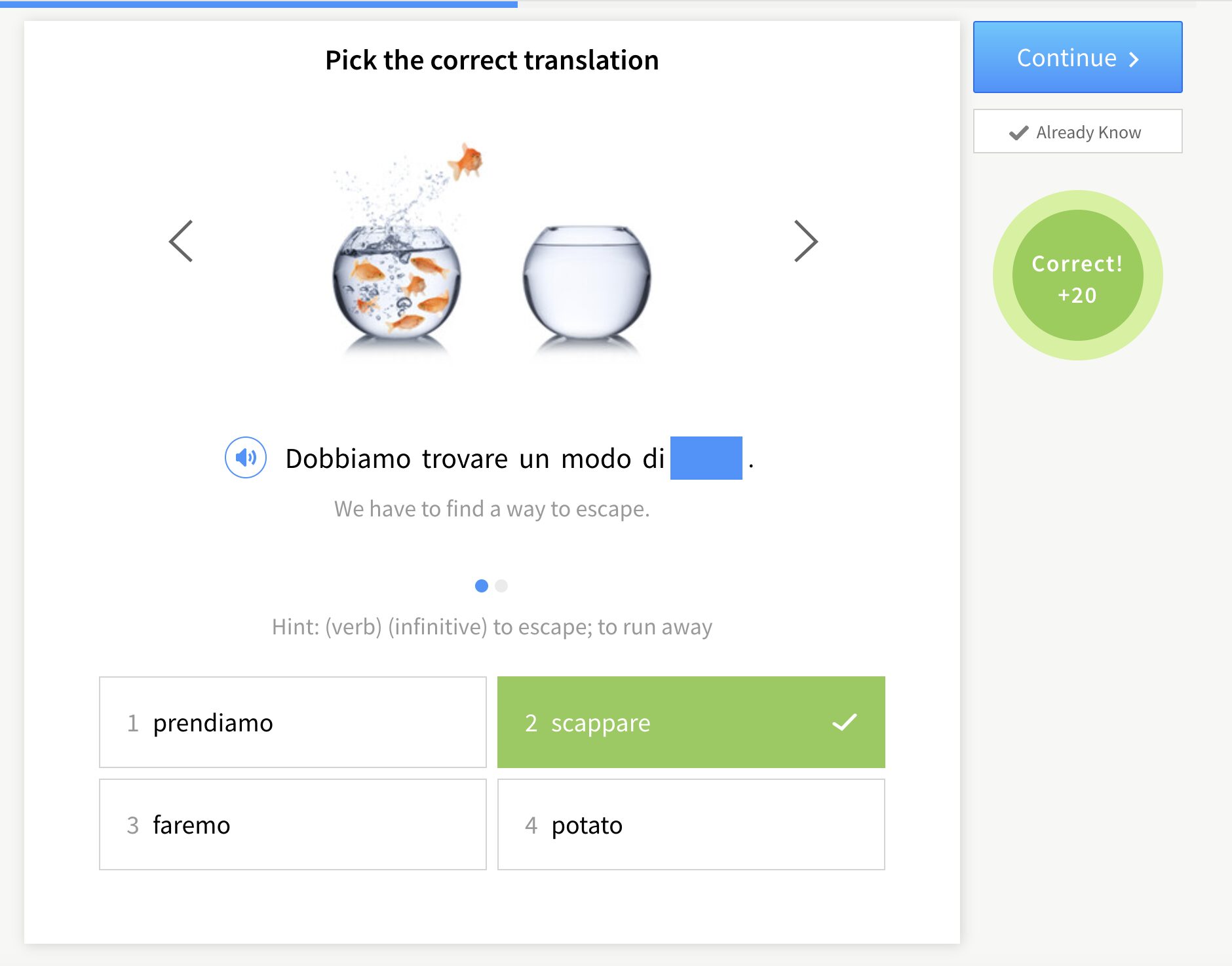How to Speak 10 Languages While Staying Sane

If you’re going to get addicted to something, let languages be your vice of choice. The only side effects are enhanced cognitive function and long-term brain health.
But what’s the best way to go about learning two, five or even 10 languages?
In this post, we’ll show you tips for pairing languages, scheduling study time and more secrets every aspiring polyglot should know.
Download: This blog post is available as a convenient and portable PDF that you can take anywhere. Click here to get a copy. (Download)
1. Adjust Your Expectations
This is probably the most important step to keeping your sanity. There are many language learners out there who strive for perfection. There’s nothing wrong with that, especially if you’re focusing on one or maybe even two languages.
However, once you get past that, being a perfectionist (i.e. striving for native-like fluency on every single language) isn’t practical.
Instead, set small goals for yourself. Slow and steady wins the race. It’s a cliche, but that doesn’t mean it’s not true. If you try to achieve ultimate mastery in a short time you’re only going to disappoint yourself.
For example, set a goal to learn 20 new words or phrases per day, or schedule an hour of practice for one language on Monday, another on Tuesday, etc.
Taking this approach will get you where you want to be much faster than if you try to race against the clock. You’ll be surprised to see how much you retain if you just pace yourself.
2. Go with What You Know
This goes against all things millennial. We’re always trying something different. We love stepping outside of our comfort zones. When you’re trying to learn several languages, though, it’s okay to stay in your comfort zone. The comfort zone will make your life a thousand times easier.
So, if you have any experience or familiarity with a foreign language whatsoever then put that language on the top of your learning list. That’s your starting point.
For example, if you know a few phrases in Spanish from a trip you took last year, then start with Spanish. If you had a little French in high school but forgot it, then start with French—it’ll come back to you.
You can also start with languages that are similar to what you already know. For example, if you speak Spanish, another Romance language like Portuguese or Italian would be a great next step. If you speak a Scandinavian language, learn another Scandinavian language. You’ll find it’s much easier to adjust to some of the rules, because many of them are the same.
But what if you only speak English? You’re not out of luck. Again, you can always start with Spanish, because it’s been said that it’s one of the easier languages to learn for English speakers. But if you want to take the road less traveled, then perhaps you might want to try Afrikaans or Dutch.
Those languages are very similar in their structure to English even though it might not seem like it at first glance.
3. Pair Up Your Target Languages
If you’re even thinking about trying to learn 10 languages then you’re probably just ambitious by nature, and not afraid of a little challenge.
If you want to get to 10 languages more quickly, try learning two of them at a time. Will it be easy? Of course not, but there are ways to make it less miserable.
It may seem crazy after our tip above, but it can actually be best to combine completely unrelated languages for simultaneous learning. Something like Portuguese and Farsi or Spanish and Mandarin.
The idea is to minimize overlap and confusion between your language lessons and practice. You want the languages to be worlds apart so that there’s no chance of muddling them up in your brain.
How does this look in practice, especially bearing in mind our tip above?
Well, you can try to learn two languages that are both somewhat familiar to your native language, but in different ways. For English learners, you might try French (which shares a ton of vocabulary with English) and Dutch (which is from the same language family as English).
You could also start with a language that’s familiar to you, then throw in a wildcard for simultaneous learning.
Setting the schedule is the trickiest part. If you’re going for two languages at a time, make sure to leave some time for practice at the beginning and end of the day to squeeze them in. Or study each language in a different environment—maybe one at home and one on your commute. You get the idea.
Only you know what your day looks like. Spread out your study time so that you’re not studying both in one marathon study session, because even if the languages are different, you’d risk overworking yourself and burning out.
4. Immerse Yourself in Each Language
Part of learning a language is being entrenched in the world of the native speakers. How do they think? What do they eat? What music do they listen to? What do they find rude? What do they find humorous? What kinds of idioms do they use?
So how do you actually immerse yourself in your target languages and start answering these questions? Here are some tips to get you started:
- Spend some time in a place where they speak your target language. This is the total immersion option, where you have no choice but to use the language every day, sink or swim.
- Get a language exchange partner (or two, or three or ten!). There are several websites that can connect you to native speakers in other countries or even in your own community. Try these fun language exchange apps for starters!
- Another thing you can try is an immersive language learning program such as FluentU.
With FluentU’s Chrome extension, you can use our interactive learning tools with any subtitled content on YouTube or Netflix. You can even import your favorite YouTube videos directly into your FluentU account for customized learning!
FluentU also gives you access to a huge library of real-world videos—movie trailers, news clips, music videos, and more—all organized by topic and level.
No more stopping to look up words or struggling to keep up with fast speech. While you watch, FluentU’s interactive captions let you tap on any word for an instant definition, audio, image, and example sentences.
Worried you’ll forget all those new words from the videos? We’ve got you! Our fun, adaptive quizzes reinforce what you’ve learned and even give you extra practice with words you find difficult, making sure they stick for the long run.
Ready to make every video a language lesson? Start using FluentU on your computer or tablet, or download the FluentU app from the App Store or Google Play. Click here to take advantage of our current sale!
5. Be Okay with Being a Copycat
Different languages have different sounds. Obviously, right? Let me go a step further.
These sounds come from the different ways we use our mouths and throats. Some of it’s very obvious like the rolled “r” in Spanish or the guttural throat sounds of Arabic. Then there are the subtle, more nuanced differences such as how we move our mouths, or where we place our tongues.
Some people find it very difficult to adapt to these strange new sounds and that’s fair. It’s the reason why people have accents when they speak a different language. This stuff is just hard to master.
However, you can try. The key is to observe and mimic. When you watch native speakers talking, pay close attention to how they move their mouths and jaws. Even pay attention to their hand movements.
Many of these natural inclinations—that native speakers aren’t even conscious of—can help a great deal if you’re trying to achieve native-like fluency in another language.
This technique probably works best when watching target language videos. If you do it in person, unless the person understands what you’re trying to accomplish, you’ll most likely just weird them out.
6. Get Over Embarrassment
Remember just a few moments ago when we were talking about accents and sounds? These often become a source of embarrassment for many language learners. People can feel foolish when they try to mimic foreign sounds that they’re not used to making.
Let go of the idea that people will point and laugh at you if you have a funny accent or make a mistake. First of all, it’s just not realistic. It almost never happens.
Second of all, it’s a huge mental block that can prevent you from learning one language, let alone 10. Just accept right now that there will be times when you mispronounce a word or make some other frustrating mistake. It’s part of the learning process.
The good news is that as you practice more and more different languages, you’ll have an easier time tackling unfamiliar sounds. On the most basic level, you’re exercising your mouth, strengthening your tongue. You’re teaching it to twist and contort in new ways that your native language never required. With practice and with each new language, it’ll get easier.
7. Practice Multiple Skills Every Day
We click on these articles hoping that someone will finally have the answer to making us fluent overnight, but it all comes back to practice. You just have to do it. And you have to do it the smart way.
Let’s say your language practice consisted only of drilling vocabulary flashcards in 10 languages every day. Your memorization skills might be top-notch but could you order coffee in 10 different countries and be understood? No.
It’s important to try and get listening, reading, speaking and writing practice in your target languages regularly. That doesn’t mean you need to practice every single language every day—rather, when you practice each language, you should focus on strengthening all four major skills.
You can keep a language diary with entries in different languages every day. You can pick a novel in a new language to read each month. You can watch movies every weekend in one of your target languages. The options are endless!
Is It Even Possible to Learn 10 Languages?
Short answer: yes. Many polyglots say they’ve learned 10 or more languages—it’s been said that the 19th-century priest Giuseppe Mezzofanti spoke 50 languages!
Was he fluent in all of them? And what does it take to say you can speak multiple languages, anyway?
That’s a more complex question.
In the article linked above, University of California Berkeley linguist Claire Kramsch argues that because of all the cultural nuances that come with a language, you must live the language in order to truly speak it. That requires long-term, in-depth contact with the language and its speakers. Kramsch estimates that you could really only live in four or five languages, tops.
That makes sense. It’s hard to keep languages fresh in your mind if you don’t regularly use them. Just trying to keep four or five fresh is a hefty undertaking.
However, consider your personal goals for learning 10 languages. Do you need to have complex philosophical discussions in each one? Or do you want to know enough to travel, meet new friends and watch movies without confusion?
The important thing is to weigh your language learning goals against your own needs, to identify the type of fluency that’ll work for you in each of your 10 chosen languages.
Everyone has their reasons for wanting to be a master of language. It could be for career advancement, travel, communicating with a multinational family or just a passion for learning. It doesn’t matter.
If you want to learn 10 languages or 10,000 languages, then it’s what you should do and don’t let anyone try to make you feel bad about it.
Inspiration for Aspiring Polyglots
Thomas Edison. Harriet Tubman. Albert Einstein. All of these crazy people accomplished things that others could only dream about. So why can’t you?
Aim for as many languages as your heart desires! If you’re willing to go for the gold, then go for it. You wouldn’t be the first. Take a look at the comments from these language superstars about being multilingual.
“No language is justly studied merely as an aid to other purposes. It will in fact better serve other purposes, philological or historical, when it is studied for love, for itself.” J.R.R Tolkein, who spoke more than a dozen languages.
“Nothing is impossible.” Audrey Hepburn, who spoke six languages.
“The difference between a stumbling block and a stepping stone is how high you raise your foot.” Benny Lewis, who speaks seven languages and counting.
“Be firmly convinced you are a linguistic genius.” Kató Lomb, who spoke 16 languages.
However you decide to tackle this, make sure you enjoy it. When you reach your goal, it’ll have been so worth it. So go forth and good luck!
Download: This blog post is available as a convenient and portable PDF that you can take anywhere. Click here to get a copy. (Download)











